Education and training of a spitz
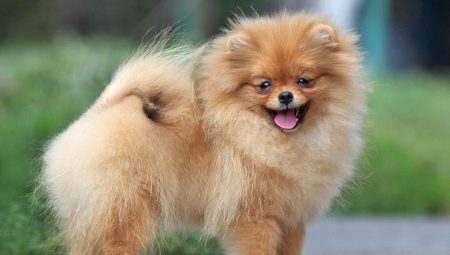
Spitz is very similar in appearance to a toy. Looking at him from the outside, some, not without reason, doubt that this loud, restless miracle can be taught to order. But if you take up education and training in time, over time you can be proud of what an obedient and quick-witted dog is in the house. When training, you need to adhere to the characteristics of the breed and the nature of a particular pet.
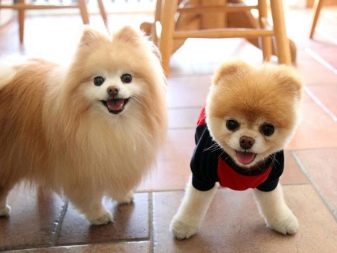
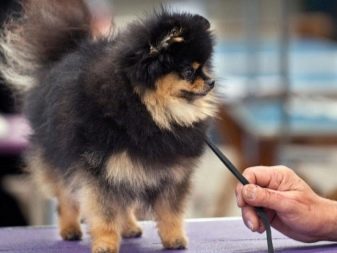
Features of the breed
Spitz are very charming. Unconditional sympathy for a small dog sometimes leads to the fact that it grows up naughty and wayward. This is the same as with small beautiful children who, having matured, become uncontrollable due to the fact that at one time everything was forgiven them and there were no prohibitions for them. To make such a dog a worthy member of the "pack of two-legged", one should take into account the positive and negative aspects of character. The pluses of the breed include:
- cheerful cheerful disposition;
- friendliness;
- lively mind;
- loyalty;
- cleanliness;
- patience with children;
- desire to please the owner.
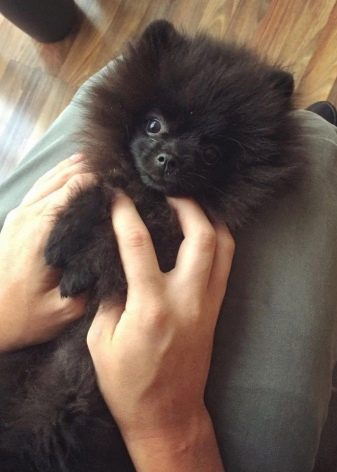
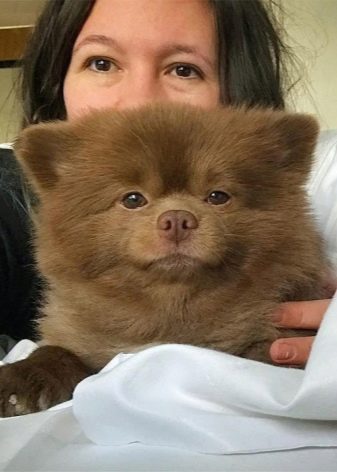
Among the disadvantages are the following:
- Spitz by nature tend to dominate, these manipulators quickly "sit on their necks";
- teases by nature, even the size of the opponent does not stop them, which threatens the spitz with herbs;
- bark loudly, screechingly, including being alone in the house, which annoys others, including neighbors;
- require increased attention to themselves, which makes them unnecessarily persistent and forces them to bully;
- show willfulness, not paying attention to the owner's commands;
- are suspicious of strangers, may rush at a guest or bark at him;
- intolerant of drunkenness, which leads to trouble.

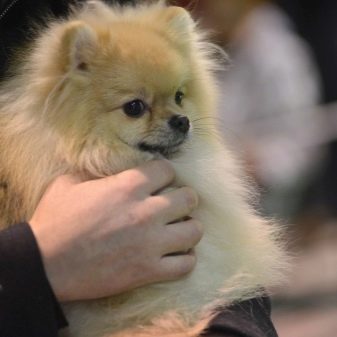
At what age can you train?
When a Spitz boy or girl appears in the house, he immediately needs to make it clear who is the boss here. We'll have to take into account the sex of the animal. It should be borne in mind that Spitz girls, contrary to popular belief about their softness, are often very independent and stubborn. A Spitz boy is more affectionate and loyal, not as capricious as a girl, but at the same time requires increased attention compared to her.
"Boys" quickly converge with other dogs and cats and are more responsive to praise in the learning process.
At the same time, during training, they are more quickly distracted, remaining in the shower as puppies until old age.
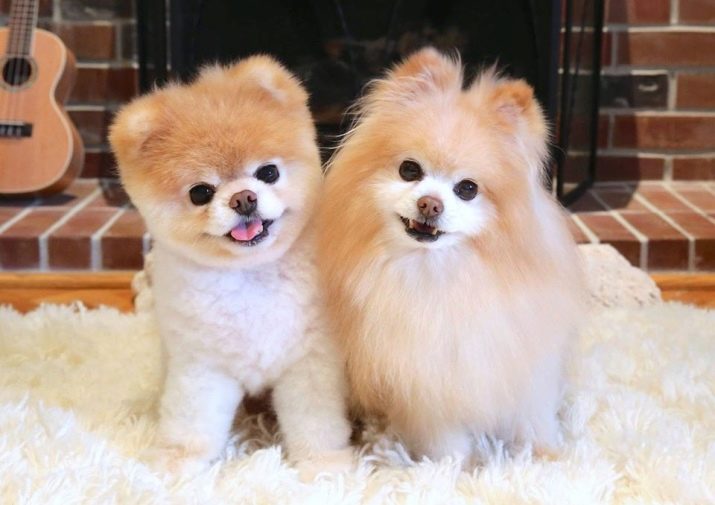
In contrast, as they grow up, girls acquire nobility and restraint in behavior, ceasing to resemble reckless cheerful goofs of the opposite sex. Despite the cutest appearance of the pet, the owner will have to immediately say goodbye to the thought that you can turn a blind eye to the puppy's pranks. By training a Spitz, you can achieve the following:
- the pet will learn to behave in human society and among its own kind, which will ensure the well-being of both itself and the owner;
- the owner does not have to blush for the manners of a shaggy friend;
- the emotional bonds between the owner and the dog will be strong;
- in the process of training, the pet will develop intelligence;
- it does not have to be locked in a separate room with the arrival of guests;
- the spitz will be tied to his home.
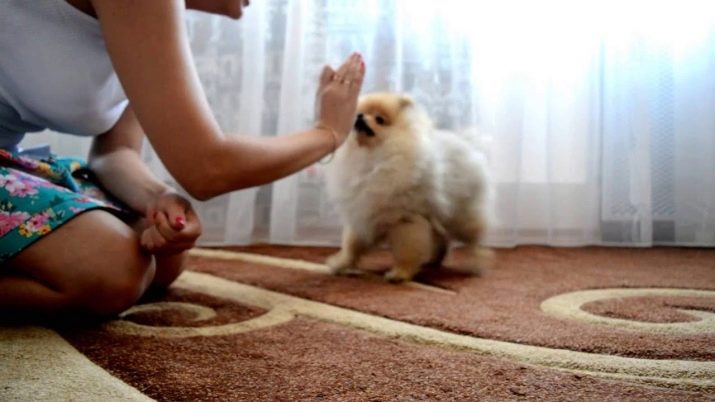
It is necessary to start training no later than 2 months, and acquaintance with the first teams - and at 1.5. This will help the dog behave properly at home. From 3 months, you can take measures so that the dog learns "decent behavior" in the big world. Teams have been working seriously since 4 months. The principle of this work should be consistency and perseverance. Concessions are unacceptable. The leader must be the leader, otherwise the pet will quickly realize that he is the main household deity who can afford any behavior.
A two month old puppy needs to buy:
- leash;
- collar and token to it (where the owner's contacts are indicated);
- toys;
- goodies for promotion.
Without all these things, it is very difficult or impossible to conduct training. The presence of the token will help out if during the training the dog runs away and gets lost.



Basic commands
In order for a beloved puppy to quickly learn to interact with a person, it needs to be trained in a number of basic commands, allowing you to behave correctly in specific situations.
- The command "Place!"... She needs to start teaching the baby as soon as he has his own corner in the house. The first time, pronouncing this word, the puppy needs to be transferred to its bedding.
- Team "Come to me!"... This is almost the basic command for a dog to ensure quick interaction. You need to put on a leash on your pet and say the command, showing him a treat. If the pet does not understand what they want from him, first he will have to pull the leash. Then he must learn to respond to the command, followed by the slap of the person on his hip.
- Team "Fu!" They pronounce this short word rudely and abruptly so that the little shaggy friend is imbued with the leader's displeasure. The puppy should have a harness, pulling on which you can prevent the baby from dragging any filth from the ground into his mouth or indulging in it.
- Sit! Command... The exercise to learn the appropriate action takes place on a short leash. The kid needs to bring a treat to his nose, raise his hand higher and say the command. When the puppy sits down, treat him with the promised treat.
- "Lie down" command. The dog must master this instruction after it learns to sit down by the order of the owner. From a sitting position, it is easier for him to demonstrate what is required of him. The dog needs to put pressure on the withers and pull the leash down without harshness so that the dog takes a lying position.
- Give command... It is convenient to practice it during the game.You need to take your favorite pet toy. And when he grabs it with his teeth, the appropriate word should be pronounced. When the Pomeranian gives the item, approve him with a piece of goodies.
- Take a walk!... The word spoken before leaving the house is usually easily perceived by the baby, and he gladly obeys the order.
- The Voice! Command. She is needed to teach a spitz to bark only on business. They give the "prize" a sniff, and then raise their hand, pronouncing the right word. When the dog barks, they deliver the promise.
- The command "Near!"... Summons a shaggy friend to walk on a leash near the owner's leg. To prevent the dog from running forward and trailing behind, it must be held in place with a leash. In this case, the dog should not feel discomfort.
If the baby is behaving correctly, he should be encouraged at first every few steps, and then after a few meters, letting him know that he is behaving like an exemplary dog.
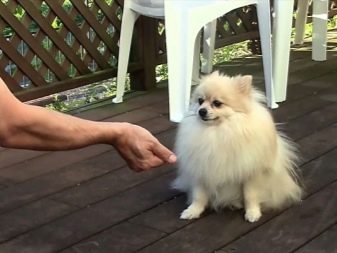
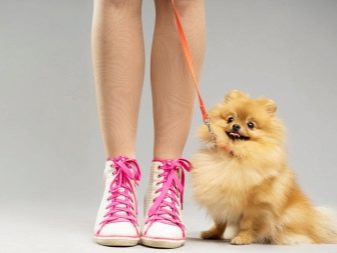
Learning stages
Commands "Place!" and "Fu!" it is better to teach a doggie in the interval from 1.5 to 2 months. Up to 3 months a spitz must master the commands "Come to me!", "Sit!", "Walk!", And up to 6 - "Near!", "Give!"
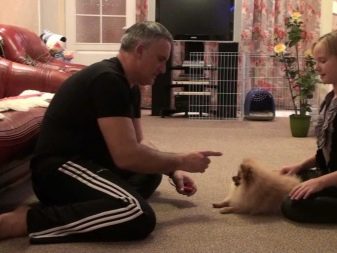

General recommendations for education
The upbringing of a baby Spitz requires comprehensive measures.
So that a dog from an early age gets used to the big world and feels like a fish in water in it, it is not enough to teach it to order at home.
You systematically need to take a small dog with you, going on business to the city, to the country, and so on. A small bag is suitable for transportation. Small Spitz fit well in it, without any inconvenience. Feeling under the protection of the leader, the baby will not whine and bark. If he often finds himself among strangers, he will quickly stop tense at the sight of a lot of strangers and street fuss.
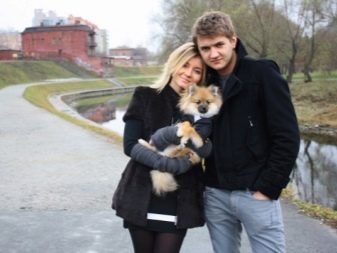
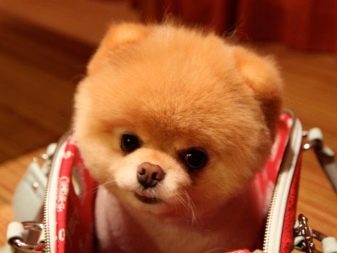
Also, a small Pomeranian must learn to communicate with other dogs. First, the pet needs to get all the vaccinations required by age, and then go to where other dog owners walk their four-legged friends.
It is necessary to teach the baby not to bark at larger relatives. It's good if the dog manages to make friends with other puppies. The walks should be sufficient so that the Spitz can run over and throw out his irrepressible energy. Then he will be able to behave calmly in the house. In addition, this will save the apartment from the mess that a dog can cause, which has not found another application of its forces.

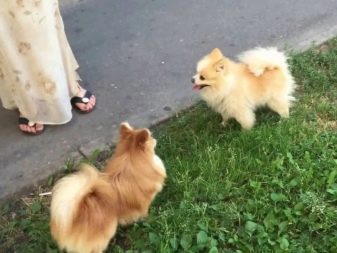
The order also depends a lot on how clearly the pet was explained what is allowed and what is not. To avoid incidents, the dog must be given the opportunity to scratch his teeth on special toys, and not on the owner's shoes. Raising a small pet is like teaching the rules of behavior to an unintelligent child. You need to be prepared for the fact that minor domestic troubles are possible, but if you show patience, everything will work out.

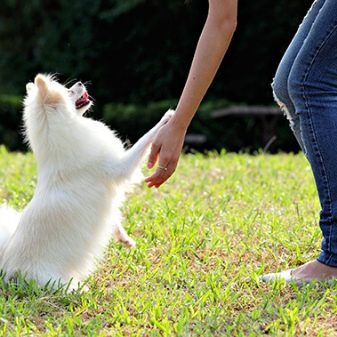
Common mistakes
If the dog behaves completely uncivilized, the helpless person can hit the pet. It is unacceptable and pointless to punish the animal physically - the dog will become aggressive and apathetic from this.
Disapproval can be expressed by commands and appropriate intonations in the voice, indicating that the friend is guilty.
If the spitz starts barking at passers-by, the owner reasonably switches his attention to the toy. The mistake in this case is to immediately start playing or give a treat. The dog will decide that loud barking is worthy of reward. A pet will come to the same conclusions if, with inappropriate behavior, you take it in your arms. For a dog, this means: you are doing the right thing, buddy, do it in the future.
It will be a mistake to require the puppy to perform commands that are beyond his age, both in terms of physical development and in terms of existing skills. One should not tire him with repeated repetition of the same actions, trying to "drive into his head" a certain technique.
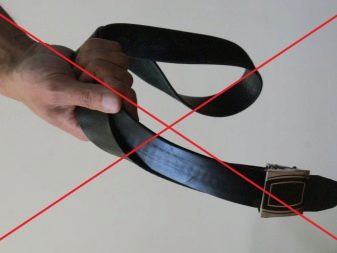
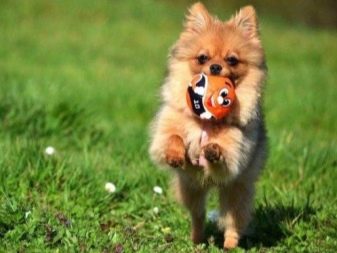
You will learn about the peculiarities of raising a Spitz from the video below.






































